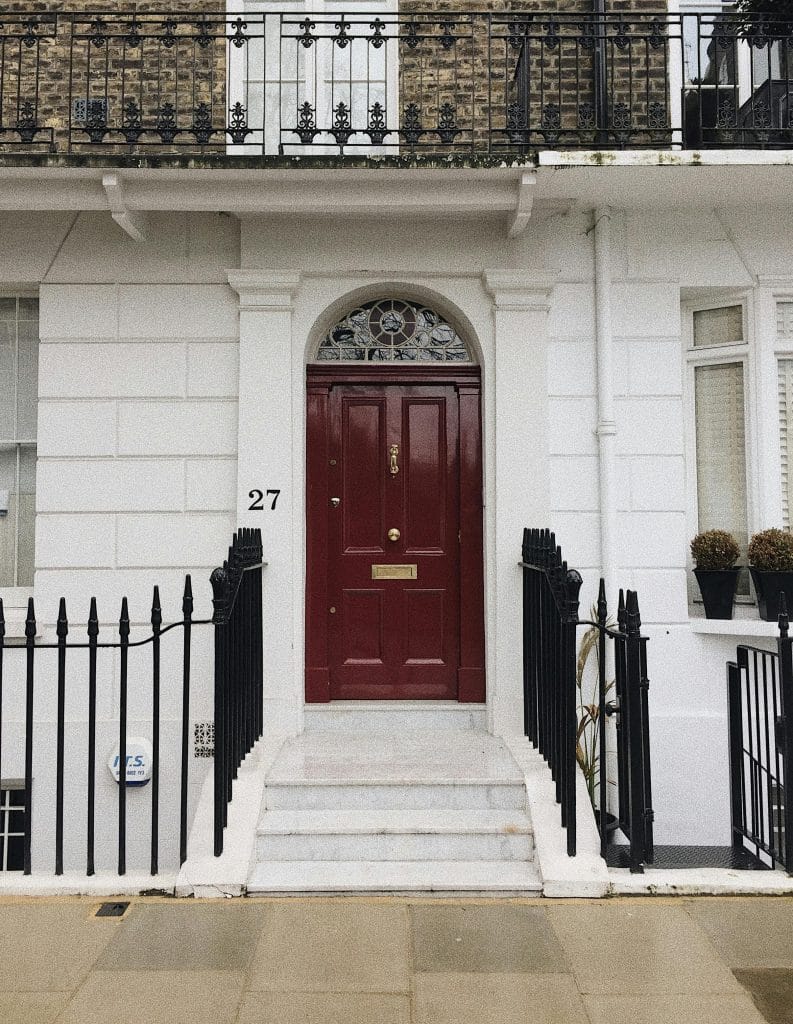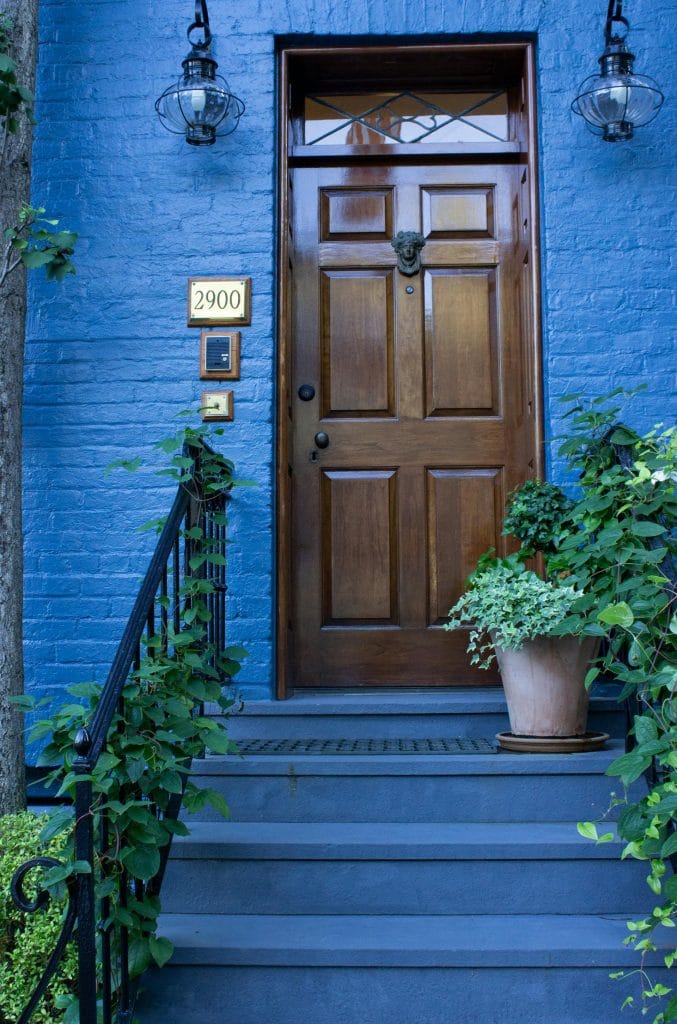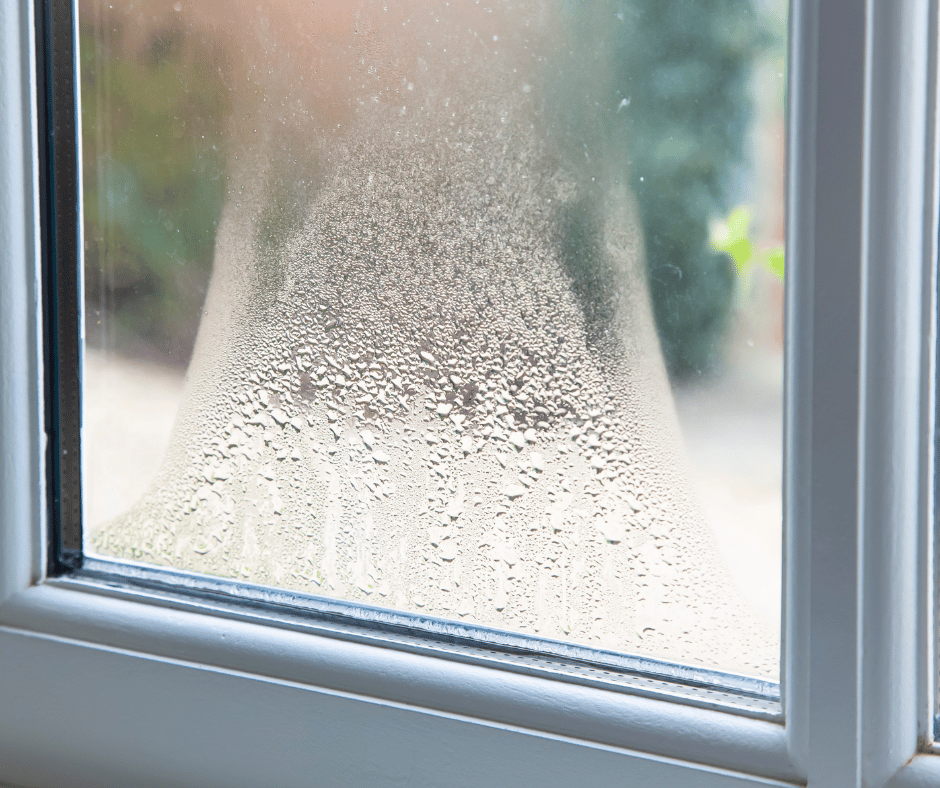Front doors come in many different materials and styles. But just what are the best front doors for security, design and energy efficiency?
There are lots of unique qualities you can look for from flood resistance to sound insulation. But generally speaking, when it comes to choosing the best front doors, there are four key factors worth weighing up: cost, security, design and energy-efficiency.
Some of these factors are more subjective than others. For example, when it comes to ‘design’, it depends very much on personal preference as to what you may find attractive. As for cost, it depends on your budget as to what you can stretch to (and pricing can vary a lot – anything from £250 for a basic uPVC door to £4000 for a high quality composite door).
Security and energy efficiency are a bit easier to objectively assess when working out which front door is best. Everyone wants to keep out burglars, and so the higher level of security, the better. Similarly, everyone wants to reduce heat loss and reduce their energy consumption, and so the higher quality of insulation, the better.
At Celestial Windows, we can help you explore a range of top quality front doors that take into account all these factors. Our composite doors have all round good qualities and could be the perfect purchase for your home. This guide delves more into why this is the case by exploring some of the different factors and the different types of doors.
Factors to Consider When Buying a Front Door
The following four factors are important to weigh up when choosing the best front door. Below are some of the important things to consider when assessing these factors.
Budget
Pricing of doors varies depending on the material and style. The cheapest front doors are generally made from uPVC and cost anywhere from £250 to £1000. The most premium front doors are generally composite doors, which can start as low as £750 but reach prices as high as £4000 for the absolute best quality. You can learn more about what a composite door is in our dedicated article.
Opting for something higher priced can result in something that is more durable and more long-lasting. You may be lucky to get 20 years out of a lower end uPVC front door. High quality steel doors can meanwhile last 100 years or more. If you’ve got a larger budget, this is something to consider.
Security
The best front doors are often incredibly hard to break into. This is an important factor to consider when choosing a front door for any property – but it could be particularly important when choosing a front door for a property in an area with a high burglary rate.
The first security feature to consider is the type of lock. There are multiple types of door lock including multipoint door locks and Euro cylinder locks, however the most secure is generally thought to be the five lever mortice lock. This should be designed to British security standards (BS 3621).
You can also consider other security hardware on the door. Spy holes can allow you to see who is outside, while frosted glass can stop burglars peeping in. Other security hardware includes door chains, video doorbells and smart locks (all of which can be pre-installed on doors, but are often added later as modifications).
The material of the door also impacts its security quality. Materials like steel and solid wood are some of the most robust options, while composite doors feature a mixture of materials for maximum robustness. If you choose a front door with glass panels, make sure to consider laminated glass or double glazing for extra security. Reinforced frames containing steel can meanwhile ensure that the frame is burglar-proof (you don’t want to put a secure door in a weak frame).

Design
The design of a front door is also very important. You need to find something that’s aesthetically appealing while also practical. Aesthetics will typically come down to personal preference (although you may want to consider what others may think if you’re trying to boost the value of your home).
There have been many different styles of front door popularised throughout the years. Classic styled and French doors may have features like panels, stained glass and ornamental knockers. More contemporary styles of door typically feature a more minimal look, pull bars and long narrow windows. While both types of door can look attractive, it’s important to consider which one matches the architectural style of your home better. Classic doors generally look better on older properties, while contemporary doors look better on modern properties – but there can be exceptions.
You can often customise the colour of a front door. Some people prefer bolder colours like blues and reds, while others prefer more neutral colours like blacks and browns. You can even settle for a textured wood look. Finishes and other decorative elements like house numbers may also be possible to customise.
It’s worth noting that some styles are more durable or easier to maintain. The material and texture may impact how hard it is to clean and refinish, and may similarly affect how your door ages over time. If you want a low-maintenance door, think carefully about how the design affects this.
Energy efficiency and insulation
Energy efficiency is another important factor to consider. A lot of heat can be lost through a poorly insulated door. By understanding what type of front door is best for reducing heat loss, you can potentially lower your energy bills and save a lot of money.
An energy rating scale is used to measure energy-efficiency. The best rated front entry doors are A++, while the lowest rated are G. Doors with glass in them may use a U value instead which is ranked from 0.1 (the most energy efficient) to 1 (the least energy efficient).
The level of insulation is often determined by the material used within the door. What’s the best front door material for reducing heat loss? Either insulated steel or fibreglass. Such materials are sometimes combined in composite doors to provide added insulation.
Additional front door features can help to enhance energy efficiency. This includes door seals, thresholds, letterbox draught excluders and double-glazed/triple-glazed glass.
The Best Door Front Door Types
One way to determine the best type of front door is to consider the material. A door’s material can affect its price, its security, its design and its energy efficiency. Below is more information on some of the main front door materials and their pros and cons.
The Best – Composite front doors
Composite doors are made from a mixture of materials. In most cases, this includes a solid hardwood core, reinforced steel frame and surface made from fibreglass. This mixture of materials gives composite doors some impressive qualities.
Pros
- Composite doors boast a good level of security thanks to their combined use of steel and timber.
- A mixture of materials allows these doors to be styled in all kinds of ways. They are a popular solution for contemporary styled doors, but can also be used for classic style doors.
- The fibreglass skin typically added to composite doors provides a good level of insulation – particularly when combined with steel and timber.
Cons
- Composite doors are often priced higher than other types of door and may not be suitable for those on a tight budget.
Aluminium front doors
In recent years, there has been an increase in the use of aluminium as a front door material. Aluminium notably does not rust and is a robust weatherproof solution. It can be painted in various colours to achieve all kinds of contemporary looks.
Pros
- Aluminium doors stay strong under pressure, which makes a good defence against bad weather and burglars.
- Aluminium offers a good level of insulation, making it a good option for those wanting to reduce their energy bills.
Cons
- Aluminium doors can cost even more than composite doors in some cases.
- Their metal appearance makes them ideal for contemporary designs, but unsuitable for more classic styles.
uPVC front doors
uPVC stands for ‘unplasticized polyvinyl chloride’. It is the most common material used in windows and doors in the UK. Many homeowners choose uPVC because it is low cost, low maintenance and highly energy efficient.
Pros
- uPVC is the best exterior door material for those on a tight budget and costs nothing to maintain.
- These doors also provide a good level of insulation – more so than even aluminium.
Cons
- uPVC doors are available in different colours and styles, but are generally limited to more contemporary styles because of their plastic appearance.
- While it can be fitted with secure locks and other hardware, uPVC is not as secure as some other door materials.

Timber front doors
Timber is the oldest material used in doors and is still commonly used in many front doors around the UK. Front doors are often made from hardwoods like maple, accoya, oak and walnut. They can offer a rustic charm that other materials can’t and can provide a good level of insulation.
Pros
- Timber is the best material for front doors on older-period properties. However, it can equally be styled into many contemporary designs making it very versatile.
- While it depends on the type of wood and thickness, timber is generally a good insulator.
Cons
- Good quality timber is not cheap, making this an unsuitable material for those on a budget. And it’s also high maintenance – costing more money and time.
- Timber is strong but generally not as secure as other front entry door materials.
Steel front doors
Front doors can also be manufactured from steel. Such doors either use galvanised or stainless steel, which is incredibly robust and does not rust. These doors can be painted with various metallic paints just like aluminium doors.
Pros
- Steel doors offer some of the best security of any material and are popular in many commercial buildings.
- Steel is also very effective at reducing heat loss and could save you money in energy bills.
Cons
- Steel is better suited to contemporary styles and it may have some practical drawbacks for people such as being overly heavy (making it less suitable for those with disabilities).
- These doors can be very expensive to install and their weight means that additional frame reinforcement is often needed.
Fibreglass doors
What is the best type of front door for reducing heat loss? That would be fibreglass. Also known as GRP (glass reinforced plastic), fibreglass is a very modern material that can be moulded to create any colour or texture. It has become an increasingly popular option in homes.
Pros
- These are the best front doors when it comes to energy-efficiency (aside from composite doors, which typically contain a fibreglass layer anyway).
- Fibreglass is a very versatile material that can be styled in many ways to mimic metal or even timber.
Cons
- Fibreglass doors can often come at a premium price compared to other types of door.
- Fibreglass is also not the most secure option, but can be made very secure with the right lock and security hardware.
Best Front Doors – Budget Considerations
Cost can be one of the most limiting factors for some people. The price is often determined by what material you choose and what types of additional features you want. If you’re looking to save as much money as you can upfront, a basic uPVC door with no windows and a basic lock may be the best solution.
Of course, if you want to save money in the long run or even add value, you’ll need to invest more money upfront. Timber doors can add a lot of value, fibreglass doors will save you money on your energy bills and steel doors will last for years to come. The best all-round option: composite doors, which offer good longevity and energy savings, while also boosting the value of your home.
What’s a good budget option that also offers decent security, energy savings and aesthetics? A decorative uPVC door with improved security features could be one option to consider. There are also some cheaper used timber and metal doors out there that boast all of these qualities. Don’t write off composite doors either – while these doors are generally higher priced, there are some more basic cheaper designs out there with well balanced qualities. These could be viewed as the best value front doors.

FAQ’s
What is the best front door for security?
A steel door with a multi-point mortice lock is the most secure option. However, you can also buy composite doors with steel frames and equally robust locks.
Which is the best style of front door?
This is largely a matter of personal preference. However, you should generally try to match the style of a door to the architectural style of your home. The best exterior door brands will have a vast range of styles to choose from.
What are the best front doors for weather-resistance?
Aluminium offers some of the best weather resistance. Fibreglass is also a good option and won’t let cold drafts through while trapping heat in. However, composite doors are also a very good solution.
What is the strongest type of front door?
Steel offers some of the best strength, but is very heavy. Aluminium is almost as strong and lighter. Composite doors can also be strong as they often contain one of these metals within them.
What materials are commonly used for front doors in the UK?
uPVC is the most commonly used material in the front doors of UK homes – typically because they are the best front doors in terms of pricing. Aluminium, timber and composite doors are also popular.
How long can I expect my front door to last?
The best quality front doors can last well over 50 years. It depends very much on the material and how well you maintain the door. For example, a poorly maintained timber door may last less than 20 years, while a well-maintained timber door can last over 100 years. Steel doors generally offer the best longevity (100 years +) while uPVC doors rarely last much longer than 20 years.
What factors affect the cost of a front door?
The cost of a front door is determined by its material, its build quality, its additional features and its previous use. More complex and heavy doors may also cost more to install. uPVC doors are generally some of the cheapest options. Some of the most expensive options include fibreglass, heavy steel and high quality composite doors.
Conclusion – What
Understanding the different materials and features of a front door can help you to find the best front door for your property. It is important to weigh up the four factors: cost, security, design and energy efficiency. At the same time, you need to consider the best type of front entry door for your individual needs.
At Celestial Windows, we pride ourselves in being one of the best front door companies in Middlesbrough and the North East. We can help you choose from some of the best exterior door manufacturers to find a door that meets your every requirement. We’ll then handle the installation process to make sure that your door is properly fitted. Contact us today and see how we can help.




